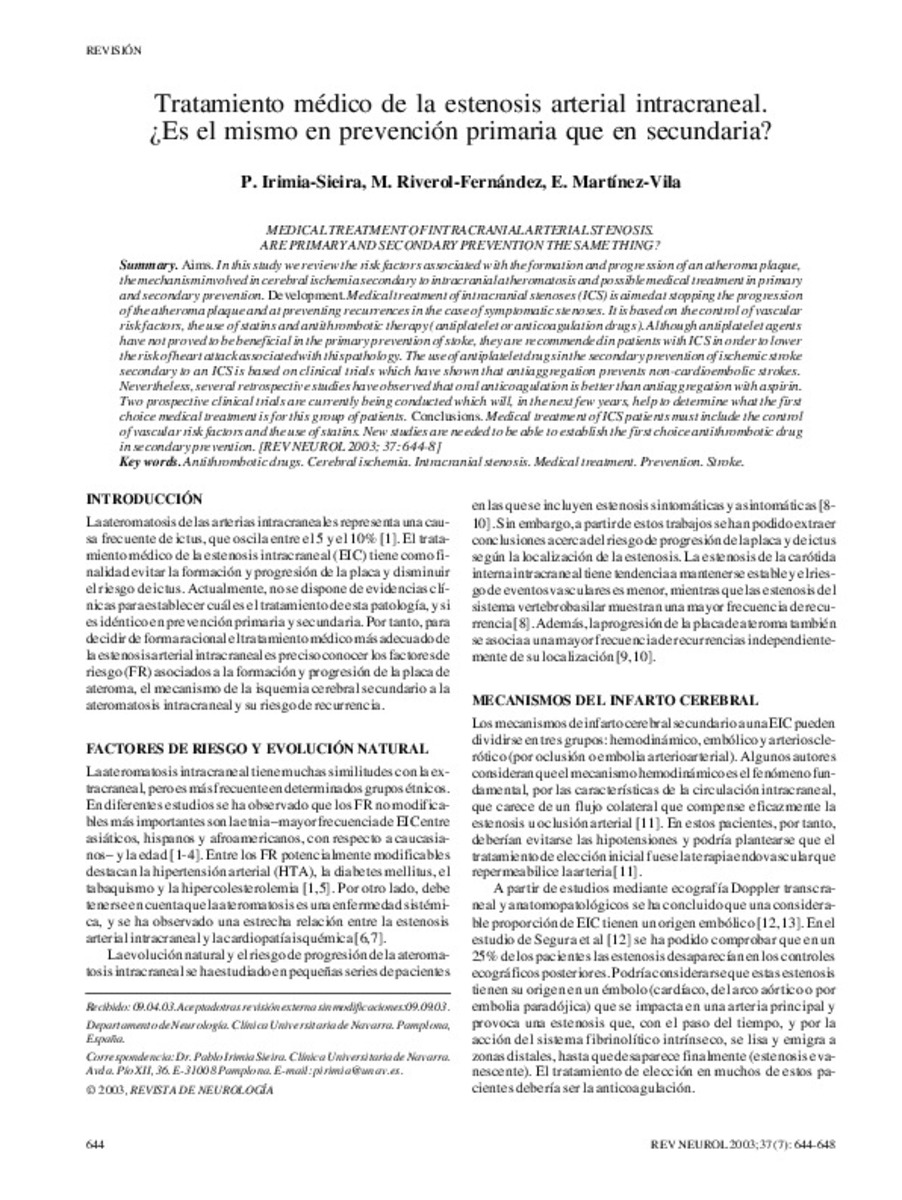Tratamiento médico de la estenosis arterial intracraneal. ¿Es el mismo en prevención primaria que en secundaria?
Otros títulos :
Medical treatment of intracranial arterial stenosis. Are primary and secondary prevention the same thing?
Palabras clave :
Arteriosclerosis/complications/drug therapy/pathology
Brain Ischemia/drug therapy/etiology/pathology/prevention & control
Constriction, Pathologic/drug therapy/pathology/prevention & control
Fecha de publicación :
2002
Cita:
Irimia-Sieira P, Riverol-Fernandez M, Martinez-Vila E. Tratamiento médico de la estenosis arterial intracraneal. ¿Es el mismo en prevención primaria que en secundaria? Rev Neurol 2003 Oct 1-15;37(7):644-648.
Aparece en las colecciones:
Estadísticas e impacto
0 citas en

0 citas en

Los ítems de Dadun están protegidos por copyright, con todos los derechos reservados, a menos que se indique lo contrario.







